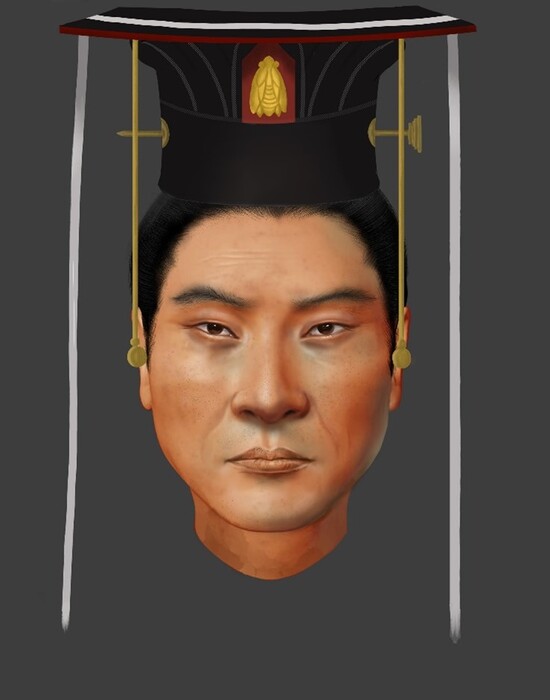Good scientists need ingenuity, but also a little luck - especially those who are looking for all sorts of old things in the earth. This is also shown by a recent find from Ethiopia.
Researchers have discovered an exceptionally well-preserved skull there. The piece is about 3.8 million years old and gives an insight into the so far mysterious evolution of our ancestors, writes the team around Yohannes Haile-Selassie of the Cleveland Museum of Natural History in the US state of Ohio in the journal "Nature".
With the help of the skull a face of the species Australopithecus anamensis could be reconstructed for the first time. This is considered the earliest clear ancestor of humanity.
Bence Viola / Cleveland Museum of Natural History / AFP
Skull find in East Africa
A. anamensis is the earliest known species of the group Australopithecus. So far, there were only sparse finds of this species, which probably existed in East Africa about 4.2 million to 3.8 million years ago. This was followed by the Australopithecus afarensis, who lived until about 3.0 million years ago and became famous especially with the famous skeleton of Lucy.
For comparison, the earliest findings of modern man Homo sapiens are about 300,000 years old.
more on the subject
The researchers now discovered the skull with the acronym MRD in 2016 in the Afar region, about 550 kilometers northeast of the Ethiopian capital Addis Ababa. At the Miro Dora site, thousands of fossils from more than 80 mammal species have been excavated. Among them are about 230 finds that belong to more than three million years old ancient people. The area is only about 50 kilometers from the place where, in 1974, the approximately 3.2 million year old remnants of Lucy were discovered.
The skull now under investigation probably originated from an adult male Australopithecus. Crucial information about the find provided the researchers with the teeth.
"It's good to finally be able to give the name a face as well."
"The nature of the upper jaw and a canine were crucial for attributing the skull of the type A. anamensis," says co-author Stephanie Melillo from the Max Planck Institute for Evolutionary Anthropology in Leipzig. "It's good to finally be able to give the name a face as well."
The Skull of the Vormenschen exhibits already complex characteristics of later kinds, but carries also characteristics, which remind of earlier and more primitive human ancestors like Ardipithecus and Sahelanthropus. Ardipithecus lived about five million years ago, Sahelanthropus even up to seven million years ago.
photo gallery
9 pictures
Anthropology: acquaintance with consequencesThe skull questions previous assumptions about the evolution of pre-human beings. So far, researchers have suggested that A. afarensis - the species in which Lucy counts - has gradually evolved from A. anamensis. However, after analyzing the now found skull, the researchers assign a 1981 discovered and previously puzzling skull bone, which is 3.9 million years old, to the younger species A. afarensis.
This means that both species must have existed at least 100,000 next to each other. Thus, the younger A. afarensis would not have replaced the older A. anamensis directly. "This fundamentally changes our understanding of human evolution during the Pliocene," says researcher Haile-Selassie. The Pliocene ranges roughly from over five million to 2.5 million years ago.
Cleveland Museum of Natural History
Yohannes Haile-Selassie with the find
The age of the skull, researchers from Beverly Saylor at Case Western Reserve University in Cleveland have dated in a second "Nature" paper on the surrounding layers of volcanic rock and came to 3.8 million years.
In addition, the research team reconstructed the landscape and vegetation from petrified plant remains. Accordingly, a river flowed into a lake at the site. The area was at least partially wooded. The river probably sprang up in the dry highlands. Over time, the area was completely overshadowed by ash and lava.
Delighted with the discovery of the skull, Fred Spoor of the Natural History Museum in London commented on the studies. "This skull could become another famous icon of human evolution," he writes. "Previously, A. anamensis was known only through parts of the maxilla and mandible, isolated teeth, a small portion of the cranium and few bones."
Whether the computer-aided reconstruction of the face is one hundred percent true, but no one knows. Nevertheless, the work shows how important a single fossil can be for paleontology.















